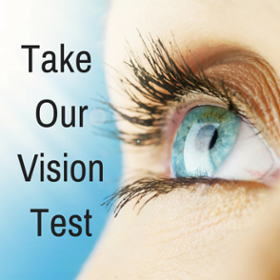 Supplying the Demand: Products for Highly Productive Physical and Occupational Therapists
Supplying the Demand: Products for Highly Productive Physical and Occupational Therapists
Physical and occupational therapy are two specialties on the rise. With the first Baby Boomers reaching age 60 this year, the resulting increase in middle-aged and elderly people requiring therapy services at some point in their lives makes these healthcare specialties even more important.
Add in the numbers of temporarily and permanently injured or disabled persons looking to continue with work and leisure, and you have an increasing demand that shows no immediate signs of abating.
Therapists are responding to this demand with the use of some innovative products and techniques designed to help patients resume and improve their lives. The products range from the common to the technologically sophisticated and from inexpensive to costly.
Theraball
Gym members and home exercise enthusiasts everywhere are hopping on the fitness ball bandwagon. Many use the large ball to teach balance and stability and to strengthen core muscles. Similar devices, known as theraballs, are also used in a variety of therapy settings, with applications not unlike those found in the fitness arena.
The theraball is used in rehab for many reasons. When using a theraball, posture is emphasized because of the demand for balance, when sitting [or] laying on the ball and exercising,” says Joel Stutzman, DC, a chiropractor in the Philadelphia area. Stutzman says it is essential to train the nervous system to manage the rapid-fire feedback that helps a person balance and respond to a variety of situations. “Through training the nervous system, coordination of muscle firing is achieved, which is essential in protecting our musculoskeletal structures, in particular, the spinal column and joints involved. Strength is crucial as well, but more often than not, balance and coordination are grossly overlooked.”
One of the chief benefits of the theraball is its portability and the ease with which it can be integrated into a home rehabilitation or exercise routine. “There are many costly machines designed for physical therapy, but once the patient leaves the office, they are likely to discontinue exercise altogether. The ball is a way to encourage long-term commitment for exercise maintenance, decreasing the likelihood of reinjury, because of its at-home use,” says Stutzman.
SMART Balance Master®
The SMART Balance Master®, a device from NeuroCom International Inc., makes use of technology originally developed for NASA to train astronauts. The device, which employs a moving platform on which the patient stands and a moving surrounding for the patient to look at, provides assessment and retraining of sensory and voluntary motor control of balance with visual biofeedback. Both the platform and the surrounding can be held stationary or made to move, independent of each other. “We are using it for all neurological populations and for amputees,” says Mike Bonner, MBA, director of neurorehabilitation for Good Shepherd Rehabilitation Network in Allentown, Pa.
The device receives good reviews from Susan Golden, PT, regional manager and vestibular rehab certification trained therapist at Good Shepherd: “The NeuroCom Balance Master® has provided us with a tool that gives us objective information on balance for the first time that we can track over time,” she says. “The biofeedback component has been very useful in the clinic and patients love it. They see themselves in realtime.”
Thermacare
Not all effective therapy products require major capital expenditures; some are regularly available on the drugstore shelf. This is true of Thermacare, the wearable wrap that provides gentle heat at about five to 10 degrees above body temperature. It is a favorite of John Mayer, PhD, a researcher with the U.S. Spine and Sports Foundation in San Diego.
The Foundation is a non-profit research organization affiliated with Spine and Sport, a for-profit company that owns 12 physical therapy clinics. To make a treatment recommendation to the clinics, Mayer looked at the traditional approach to active exercise treatment, which involves allowing a patient to exercise and then applying ice.
As an outgrowth of his doctoral research, Mayer looked into using heat instead of cold, and he found that patients reported two times greater functionality and more complete pain relief. While his earlier work involved using a circulating water pack to provide the heat, he prefers the commercially available Thermacare because “patients can remain active while exercising.”
Vision Restoration Therapy
Sometimes, a brain injury – such as the residuals of a stroke – can cause a limitation of the visual field seen by the patient. Whereas previous assessments and therapies focused on learning the extent of the damage and helping the patient learn to compensate, there is now a way to stimulate and improve the visual field. This is Vision Restoration Therapy (VRT) from NovaVision.
Tim Burkhart, MS, OTR/L, CBIS, is an occupational therapist for Washington County Hospital in Hagerstown, Md. He explains that, after an initial assessment, patients use VRT in the comfort of their own homes. Over a six-month period, the patients look at a fixation point, a dot in the center of the display. According to the extent of the visual field cut, additional dots will flash on the screen to stimulate the cut visual field. When the patient sees the dot, he or she clicks a mouse interface. By using the VRT device twice a day, six days a week, in half hour sessions, patients have the potential to regain some of their lost field of vision.
Burkhart says that he has already seen some significant benefit among his caseload of 20 patients using VRT. Of the four who have finished the course of treatment, “two have really reported that they are able to see better and do things they couldn’t before.” One even has a good chance at regaining the ability to drive, an important step toward maintaining independence.


